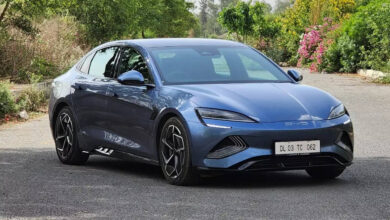7 Best Electric Vehicle ETFs to Buy | Investing

Electric vehicles, or EVs, are once again capturing the attention of investors this year, but the sentiment is not as optimistic as it once was. The current controversy revolves around Tesla Inc. (ticker: TSLA), a titan in the EV industry.
Tesla has experienced a significant downturn in 2024, and it’s been one of the worst-performing stocks in the S&P 500 with a year-to-date loss of 42.8%, standing in stark contrast to the S&P’s gain of 5%.
The challenges for Tesla don’t stop there. The company is again embroiled in an ongoing dispute concerning CEO Elon Musk’s compensation. After a Delaware court previously voided his $56 billion pay package, Tesla is set to seek shareholder approval once again.
Adding to its woes, the much-anticipated launch of Tesla’s Cybertruck was beset by complaints of poor build quality, culminating in a recall of all 3,878 vehicles sold due to a potentially hazardous fault with the accelerator pedal pad getting stuck.
In an effort to placate investor concerns, Tesla announced a strategic pivot toward a robotaxi venture and slashed the price of its self-driving software package from $199 to $99 per month.
Unfortunately, the latter has also faced criticism as users reported problems with the autonomous driving software, including unintended collisions with curbs and stationary objects.
Tesla’s recent troubles highlight a key lesson: Even dominant players in innovative industries face significant challenges, and their shareholders often bear the brunt of these setbacks. However, despite these issues, some experts remain bullish on the overall EV industry’s long-term prospects.
“We recognize that the rate of growth in EV penetration is decelerating,” says Robert Draper Jr., founder and chief investment officer at Draper Asset Management. “However, we believe that EV adoption will still outpace traditional automotive sales growth over the long term due to increased efficiency in driving range, energy consumption and charging times, ultimately leading to lower operating cost and higher adoption.”
Still, there are some near-term macro headwinds for the EV industry to overcome. “2024 has been a difficult market for electric vehicles – rates continue to be elevated in the U.S., consumer sentiment remains weak in China and competition has been intensifying,” says Anthony Sassine, senior investment strategist and head of Middle East and North Africa at KraneShares. “Most EV companies have cut prices this year to protect their market share, which has eroded margins and net profits.”
For investors looking to gain exposure to the EV market without tying their fortunes to a single company, a thematic exchange-traded fund, or ETF, that targets a broader array of firms in the EV industry might be a prudent choice.
“The EV ecosystem tends to be broad and includes many industries, so owning the entire basket rather than owning one or two companies alone tends to better diversify risks and provides a more balanced approach,” Sassine says.
Here are seven of the best EV ETFs to buy today:
| ETF | Expense ratio | Average annual total return since inception |
| KraneShares Electric Vehicles & Future Mobility Index ETF (KARS) | 0.72% | 0.2% |
| Global X Autonomous & Electric Vehicles ETF (DRIV) | 0.68% | 10.2% |
| Global X Lithium & Battery Tech ETF (LIT) | 0.75% | 4.2% |
| Amplify Lithium & Battery Technology ETF (BATT) | 0.59% | -10% |
| iShares Self-Driving EV and Tech ETF (IDRV) | 0.47% | 6.2% |
| Invesco Electric Vehicle Metals Commodity Strategy No K-1 ETF (EVMT) | 0.59% | -24.5% |
| Direxion Daily TSLA Bear 1X Shares (TSLS) | 1.07% | 7.2% |
KraneShares Electric Vehicles & Future Mobility Index ETF (KARS)
“Most EV companies are working hard to produce cheaper EVs for the mass market, which should help them become more competitive with internal combustion engine (ICE) vehicles,” Sassine says. “Tesla, Nio Inc. (NIO), Rivian Automotive Inc. (RIVN) and XPeng Inc. (XPEV) are just some of the EV companies expected to release cheaper EVs between the fourth quarter of 2024 and 2026.”
For EV exposure, KraneShares offers KARS at a 0.72% expense ratio. This ETF tracks the Bloomberg Electric Vehicles Index, which includes all of the aforementioned EV companies in addition to other notable ones like Lucid Group Inc. (LCID) and BYD Co. Ltd. (OTC: BYDDF). Notably, BYD briefly surpassed Tesla in sales during the fourth quarter of 2023.
Global X Autonomous & Electric Vehicles ETF (DRIV)
“It is our opinion that the major U.S. automotive manufacturers, commonly referred to as the ‘Big Three,’ have largely relinquished the pure EV market to Tesla and Chinese counterparts, most notably BYD,” Draper says. “This can be seen in Ford Motor Co.’s (F) most recent rollback of the F-150 Lightning plant in Michigan at the end of March this year.”
Another EV ETF to consider is DRIV, which tracks the Solactive Autonomous & Electric Vehicles Index. This ETF has less of a pure-play EV focus, with shares of semiconductor manufacturer Nvidia Corp. (NVDA) currently leading the portfolio. However, it does feature shares of Tesla in addition to traditional automakers like Toyota Motor Corp. (TM). DRIV charges a 0.68% expense ratio.
Global X Lithium & Battery Tech ETF (LIT)
Another way investors can tap into the demand for EVs without focusing on vehicle manufacturers is via ETFs like LIT. This ETF tracks the Solactive Global Lithium Index, which spans the entire lithium cycle to include miners, refiners and battery manufacturers. However, it does also include some direct EV manufacturer exposure, notably BYD at a 4.2% allocation.
However, LIT’s portfolio is dominated by materials companies due to its mining-heavy focus, with names like Albemarle Corp. (ALB) sitting at the top with a 9.3% allocation. Therefore, the best use of this ETF may be as a satellite to a core EV-manufacturer-focused ETF like DRIV or KARS to gain exposure to the rest of the EV supply chain. LIT charges a 0.75% expense ratio.
Amplify Lithium & Battery Technology ETF (BATT)
A cheaper alternative to LIT for targeting the lithium cycle is BATT, which tracks the EQM Lithium & Battery Technology Index for a lower 0.59% expense ratio. This index splits its holdings between three industries: battery manufacturers, battery metal and materials producers, and EV manufacturers. Investors can expect global diversification, with a focus on China, the U.S. and South Korea.
The specific themes represented by BATT include both battery technology and component manufacturers, in addition to manganese, nickel, cobalt and lithium miners such as Glencore PLC (GLEN.L) and BHP Group Ltd. (BHP). In addition, the ETF also targets charging infrastructure companies. And both Tesla and BYD are among BATT’s top holdings.
iShares Self-Driving EV and Tech ETF (IDRV)
“Personally, I look for broad diversification in both industries and geography when it comes to EV ETFs,” says Peter Krull, partner and director of sustainable investments at Earth Equity Advisors. “China is the fastest-growing EV market, and Europe also has a number of leaders in the sector, so having an allocation to non-U.S.-based companies expands the possibilities for growth.”
The NYSE FactSet Global Autonomous Driving and Electric Vehicle Index tracked by IDRV provides both industry and geographical diversification. Its portfolio of 56 holdings includes both EV makers and internal combustion engine manufacturers making the transition to EV, and is well-distributed between the U.S., China, France, South Korea, Germany, Japan and more. IDRV also charges a lower 0.47% expense ratio.
Invesco Electric Vehicle Metals Commodity Strategy No K-1 ETF (EVMT)
“An often-overlooked way of investing in EVs is through the essential commodity inputs needed for EV production,” says Daniel Santiago, vice president of ETF research and distribution at Tidal Financial Group. “Commodities are one of the few inflation hedges that worked in 2021 and 2022, so an allocation can offer protection and benefit from supply or demand imbalances.”
Unlike the previous ETFs, EVMT does not hold equities. Instead, the ETF targets a portfolio of futures contracts designed to replicate the S&P GSCI Electric Vehicle Metals Index. These derivatives bet on the prices of cobalt, aluminum, nickel, iron ore and copper. All this comes in a liquid investment vehicle that charges a 0.59% expense ratio and does not require investors to fill out a Schedule K-1 tax form.
Direxion Daily TSLA Bear 1X Shares (TSLS)
Betting against Tesla has historically been a losing proposition for short-sellers due to the stock’s high volatility, unpredictable rallies and high cost of borrowing. However, investors looking to express a bearish thesis on Tesla’s short-term prospects don’t have to resort to short selling. A viable alternative is an inverse ETF like TSLS, which mitigates the risk of margin calls and high borrowing fees.
This ETF uses swaps to deliver a daily return one time the inverse, or opposite, of Tesla’s performance. If Tesla falls by 2% in a day, TSLS can be expected to gain 2%. However, investors should keep in mind that due to compounding, the long-term performance of TSLS may be unpredictable and can result in losses if volatility is high. In addition, the ETF costs a high 1.07% expense ratio.



